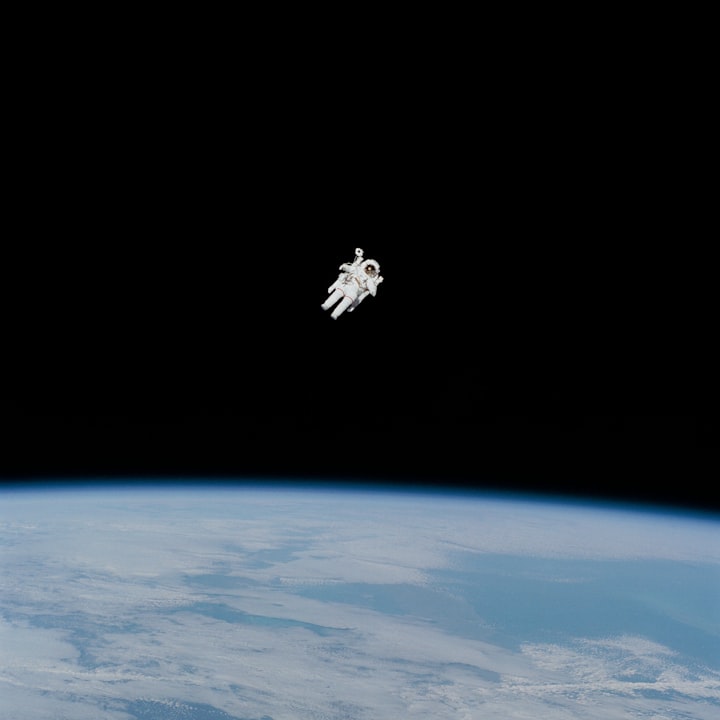LIFE ON MARS
Will humans ever be able to live in Mars?
Once upon a time, in a land far, far away (well, Africa), there lived a group of odd-looking, standy-uppy creatures called homo sapiens. Early humans had been living in Africa for hundreds of thousands of years, chasing gazelles and running away from lions, but homo sapiens was a little bit different.
If Homo neanderthalensis was stocky and Homo Erectus was cocky, then Homo sapiens was simply the savviest simian on the savannah. Technologically innovative, highly adaptable, and capable of organizing into complex social structures, when homo sapiens decided to up and leave Africa about 70,000 years ago, the species was taking steps that would change the world forever.
In just a few decamillenia, these dauntless drifters discovered every nook of the earth, from Siberia's shivering tundras to Australia's arid expanses; from America's grand grasslands to the verdant valleys of Asia. During that time they - or should I say we - also learned to fly, built cities, explored the solar system, harnessed the power of the atom, and invented the sandwich.
But all that progress has come at a price - today, we’re arguably in danger of outgrowing our home planet, which has us wondering whether it's time for the next grand human migration. If you think messing up a planet and then buggering off is a bit like farting in a lift and running away, then you’d be right, but let’s not get lost in ethical debates.
Instead, we need to figure out where we are going. The smart money says Mars. And I say ‘smart money’ because Elon Musk is both smart and has lots of money, and Mars seems to be where he’s off to. But is he right? Could human beings really travel to, and eventually coloniZe, the Red Planet? Mars is a particularly appealing option for human migration for several reasons.
For starters, it's one of the closest planets to Earth at an average distance of about 140 million miles. It also has similar length days to Earth, so even though it only receives about 44% of the sunlight, at least you won’t need to change your alarm clock. Mars is also rich in useful elements like magnesium, silicon, and of course, iron, which puts the ‘red’ in the Red Planet. Important resources like these could all be mined when we get there, reducing the amount of expensive excess luggage we’ll need to book on SpaceX’s Starship.
Finally, and most importantly, Mars lies on the cusp of our solar system’s habitable zone - the area around the sun in which liquid water could exist on an orbiting planet’s surface. Water once flowed freely on the Red Planet, and we know that plenty of quality H20 can still be found in its ice caps. If we found a way to melt them, we could create a life-giving ocean between 5 and 11 meters deep across most of the planet.
Unfortunately, the good news ends there, and the bad news is… well, really bad. With surface air pressure about 1% of our own, Mars has all the atmosphere of a kebab shop on a Tuesday morning. Liquid water would boil away in seconds, just like your blood, if you dared to step outside without protection. So… yeah. Don’t do that.
The measly Martian atmosphere isn’t just thin, it’s also 95% carbon dioxide, which is deadly to humans in high doses and, ironically, a major reason we might be heading to Mars in the first place. Earth’s thick atmosphere and strong magnetic field shield us from dangerous cosmic and solar radiation. Mars has no magnetic field, and without those twin shields the Martian surface is a very dangerous place indeed, with levels of ionizing radiation 40-50 times higher than on Earth.
That’s enough to dramatically increase the risk of cancer and can potentially cause acute radiation sickness or even death. Mars is also home to some pretty extreme weather. Dust storms, with winds hitting 250 mph, can last for days or weeks, and can occasionally engulf the entire planet.
They would pose a serious threat to equipment, space suits, and our makeshift Martian shelters. But wait, there’s more! Martian gravity is only a third of Earth's, and we don't know exactly what long-term effect that would have on the human body, but astronauts who’ve spent significant time in space have suffered from muscle atrophy and a loss of bone density.
Even in a protective suit, living on Mars might fast-track you to having a 90-year-old's body .And Mars is cold – I mean, really cold. Think -62°C on average and -140°C on a nippy winter day. Just in case you’re the hungry type, I should probably also mention that Martian soil is toxic, so we won’t be able to safely grow any food. Not even Mars bars.
Lastly, let's talk about social logistics. Colonizing Mars would be like an eternal Christmas with the in-laws. Confined spaces and clashing personalities can lead to depression, anxiety, and a range of homicidal thoughts. OK, so the basic summary here is that Mars hates us and wants us all dead. The question is, what can we do about it? Well, if there’s one thing I learned during my previous career as the dictator of a small insular state, it’s that there’s nothing nuclear weapons can’t fix.
Oddly enough Elon musk seems to agree, because he wants to make Mars more habitable by bombarding it with 10,000 nukes. But there is some method to the madness of declaring nuclear war on an uninhabited planet. The dream scenario when it comes to migrating to Mars would be to terraform it - that is, using tech to make it habitable. First, we’d need to warm things up a bit, hence World War III: Mars Edition.
Musk plans to aim his atomic arsenal at Mars’ polar ice caps, vaporizing the large quantities of water and carbon dioxide trapped within. Releasing these greenhouse gases could theoretically create a runaway greenhouse effect, warming Mars to Earth-like temperatures.
Unfortunately, this bold plan has some big issues. For one thing, Bond villains aside, it's actually quite tricky for private individuals to acquire nukes (sorry Elon). More importantly, a 2018 study concluded that nuking Mars, while kinda cool, could trigger a nuclear winter, with dust and debris blocking out what meagre sunlight the planet currently receives, making it even colder.
Another idea would be to melt Mars’ ice caps not with bombs, but with a mirror. The idea would be to stick a giant aluminium mirror in orbit around Mars, concentrating sunlight on the southern ice cap. It’s an innovative approach, but it too has drawbacks - to focus enough energy to melt all that ice, the mirror would need to be 250 kilometers across - that’s about 20% bigger than Denmark.
Obviously, we wouldn’t be able to launch aluminium Denmark into space from earth, so we’d have to build this monstrous mirror in orbit. Considering the International Space Station, at a staggering 94 meters across, is our largest man made space object, it's clear we're not quite there yet. So, directly melting Mars’ ice caps seems tough - but maybe we could do it indirectly - by borrowing some lessons from our own planet's past.
In the late 1980s, chlorofluorocarbons, better known as CFCs, were banned worldwide because they were destroying the ozone layer. But it turns out CFCs are also incredibly effective greenhouse gases - 10,000 times as potent as CO2. Here on Earth we’re terrified of them, but up on Mars CFCs might be our new BFFs. We may even find the raw materials to produce them in Martian rocks, and if we don’t there’s always the Elon Musk-friendly option of crashing thousands of spaceships loaded with compressed CFCs into Mars.
Either way, pack Mars’ atmosphere with enough CFCs, and we’d trigger a runaway greenhouse effect, sufficiently warming the planet to release the CO2 stored in the ice caps, warming it either further, while simultaneously thickening Mars’ weedy atmosphere.
OK, so Mars is now warm enough for flips flops and shorts and the atmosphere is thick enough that your blood won’t boil every time you pop to the corner shop for a newspaper. A beefed-up atmosphere means extra protection from solar wind and cosmic radiation, which we could boost even further by generating an artificial magnetosphere around the entire planet.
Scientists have come up with several ways we might do that - including building a giant superconducting ring around Mars’ equator or installing a magnetic shield between the Sun and Mars. Great though the new Martian atmosphere would be, we shouldn’t forget the minor problem that it would be almost entirely lacking in oxygen and therefore, totally unbreathable.
NASA’s perseverance rover has already successfully converted Martian CO2 into Oxygen right there on the surface using a device called MOXIE, but scaling that up to an entire planet might not be possible. Another option would be unleashing oxygen-producing microorganisms to slowly increase O2 levels. It might sound far-fetched, but that’s exactly what happened right here on earth about 2.5 billion years ago, when cyanobacteria turned our once methane and ammonia-rich atmosphere into the tasty oxygen-rich version that keeps us alive today.
As surface conditions slowly improve, we can introduce a few hardy plant species to convert even more CO2 into O2. First, we’ll need to detox the soil of nasty toxins, but NASA has already grown healthy plants in simulated Martian soil, so it’s theoretically possible. But merely upping the oxygen levels wouldn’t be enough. Earth’s atmosphere is 78% nitrogen, an element that is inconveniently scarce on Mars.
So, to make Mars breathable, we’d have to import nitrogen on a massive scale. One way to do that would be to round up numerous nitrogen-rich asteroids and just… crash them into Mars. A more grown-up approach would be venturing to Saturn’s largest moon, Titan, which boasts a 95% nitrogen-rich atmosphere. Admittedly shipping several trillion tons of liquified nitrogen from Titan to Mars wouldn’t exactly be a cakewalk - but if we’re honest, that’s pretty much been the theme of this article.
Terraforming Mars is certainly possible, it’s just going to be really, really difficult. So difficult that NASA scientist Chris McKay thinks it'll take a cool 100,000 years. But we don’t necessarily have to terraform Mars to live there - we could go for a slightly ambitious approach and simply build artificial habitats on - or possibly even beneath - the Martian surface.
Sure, it's a tall order, but it seems solvable in the coming decades. In fact, Elon Musk - yeah him again - already has plans to build a fully functioning ‘Mars city’ with up to a million inhabitants by 2050. That guy really needs a hobby. The minor drawback to this particular mad musk plan is the cost, at roughly 10 trillion dollars - that’s around 10% of the GDP of every country on earth put together.
So, could humans really migrate to Mars? The answer is… absolutely. As for whether or not we actually will before we blow ourselves up, die from a pandemic, get vaporized by a giant asteroid or super volcano, lose the war with the robots, get enslaved by aliens, or accidentally starve to death while hanging out in a VR world (where people have legs)…
About the Creator
Enjoyed the story? Support the Creator.
Subscribe for free to receive all their stories in your feed. You could also pledge your support or give them a one-off tip, letting them know you appreciate their work.






Comments
There are no comments for this story
Be the first to respond and start the conversation.